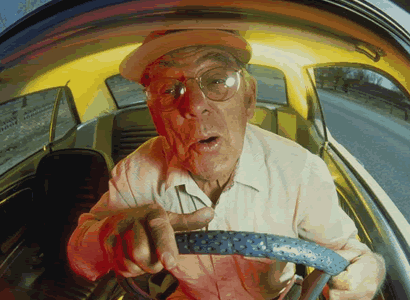Dementia and Safety Series: Driving and Dementia – What are the signs?
When an individual receives a diagnosis of dementia, one of the first concerns that families and caregivers face is whether or not that person should continue driving. A diagnosis of dementia doesn’t necessary mean that a person can no longer drive , however the early stages of dementia some may possess skills necessary for safe driving.
Some Dementia symptoms as memory loss, visual-spatial disorientation and decreased cognitive function will get worse as time goes on. Your loved one driving skill will decrease and they will give to give up driving all together.
When your loved one loses the driving freedom he or she will probably get upset. Some individuals, recognizing the risks, will limit or stop driving on their own. My mother basically as a retired nurse assess her driving skills decided to stop driving. Others may insist on driving even when it is no longer safe. Families and caregivers may have to intervene when an individual’s symptoms pose too great a traffic risk. Because the progression of dementia varies from person to person, it is difficult to know at what point an individual can no longer drive safely.
It’s important for family and friends to continue monitor their loved ones driving as their driving skills may decrease significantly in a short period of time. The goal of monitoring is to detect a problem before it becomes a crisis. If there are any doubts about safety, the person with dementia should not drive at all.
It is often helpful to keep a track of each incident of poor driving behavior. Following are some of the common warning signs.

•Drives too slowly.
•Stops in traffic for no reason or ignores traffic signs.
•Becomes lost on a familiar route.
•Lacks good judgment.
•Has difficulty with turns, lane changes, or highway exits.
•Drifts into other lanes of traffic or drives on the wrong side of the street.
•Signals incorrectly or does not signal.
•Has difficult seeing pedestrians, objects, or other vehicles.
•Falls asleep while driving or gets drowsy.
•Parks inappropriately.
•Gets ticketed for traffic violations.
•Is increasingly nervous or irritated when driving.
•Has accidents, near misses, or “fender benders.”
Discuss any concerns you have with your loved ones and the other family members, and health care providers. All involved will need to weigh potential risks and decide when your loved ones need to stop driving. Remember as a caregiver you must do your research on how to approach this sensitive issue. The next topic of this Dementia and Safety Series will go into having the conversation with your loved one.
As always do your research online as I’m sharing with your guidance from other sources as well as my own experiences






















